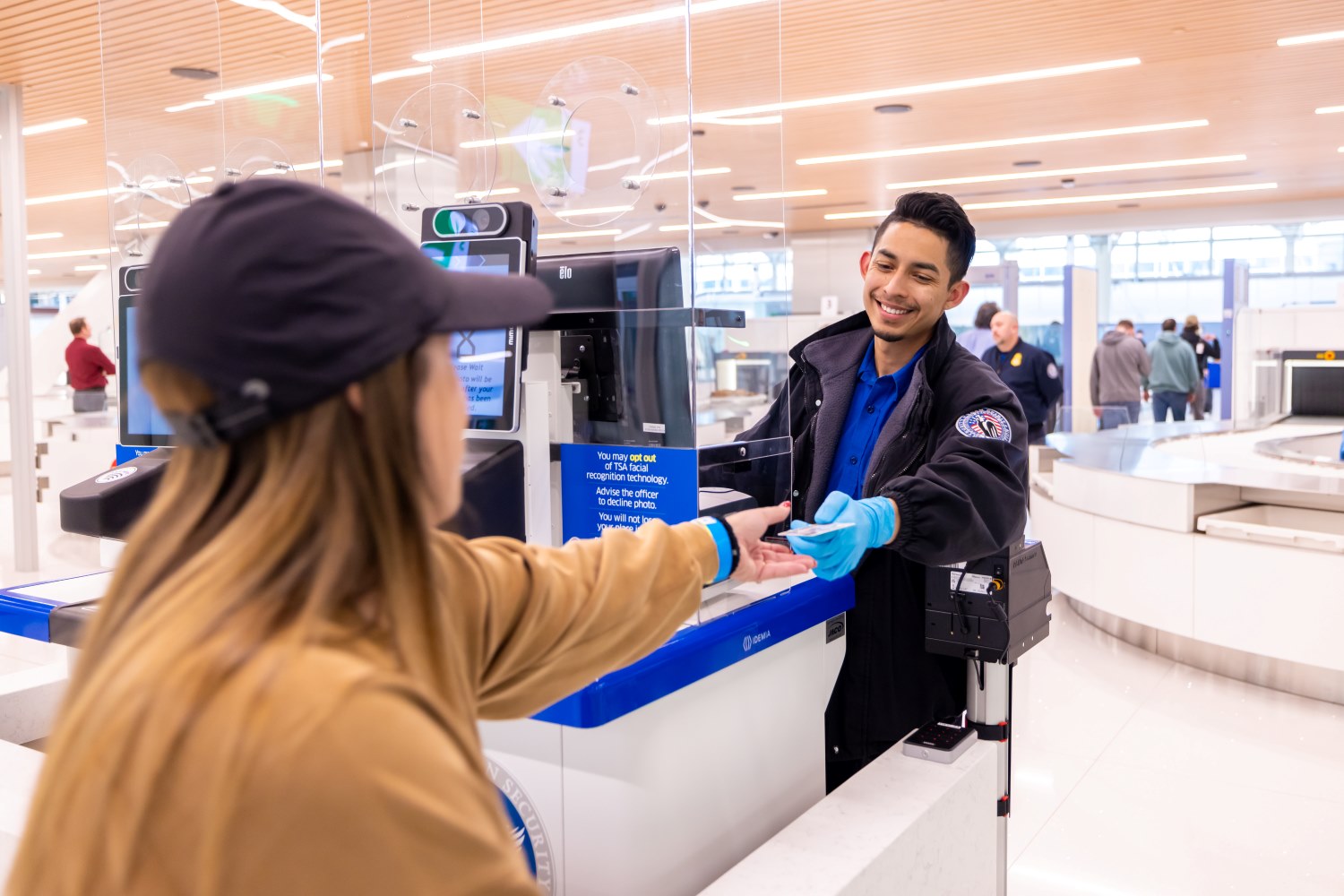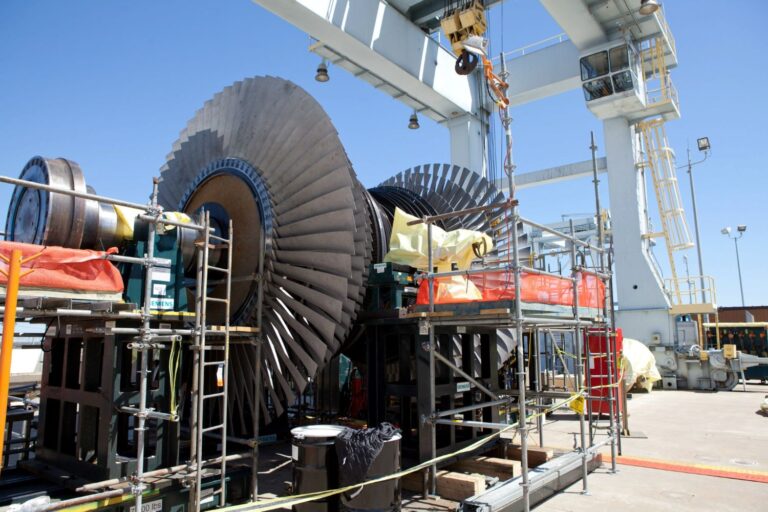Faster and Safer Airport Security: How Authorities Tackle This ‘Problem Black Hole’
We all understand that TSA officers can block any item at the screening checkpoint if they think it’s a security risk. Sharp objects in checked luggage should be covered or securely wrapped to avoid injuries to baggage handlers and inspectors.
This makes so much sense that we don’t need to have further questions on this. Corkscrews and scissors may seem harmless, but they are sharp and pointy, so it makes sense why they’re not allowed in carry-on luggage. They could potentially injure someone if your bag is in the overhead compartment and your neighbor tries to push their bag next to yours.
But there is one more thing, the liquid. Security is annoying enough with having to take off your shoes, empty your pockets, and pull out your laptop or tablet. So why did they come up with this frustrating liquid rule that slows us all down?
Why Aren’t We Allowed to Bring Liquid on Planes?
In early 2006, during the fourth year of the global war on terror initiated by the US after the September 11th attacks, Al-Qaeda and affiliated groups had expanded significantly, posing worldwide threats. In Pakistan, despite official cooperation, US and British intelligence warned that Pakistan was secretly aiding terrorist groups. Covert surveillance revealed Rashid Rauf, linked to militant groups, was central to a developing terror plot.
Rauf and his associates, Abdulla Ahmed Ali and Assad Sarwar, were monitored as they prepared a bomb plot using soft drinks filled with acetone peroxide and hydrogen peroxide, intended to be detonated on flights to North America. British authorities arrested 24 suspects and discovered homemade bombs and plans targeting multiple cities.
The investigation reveals that the terrorists planned to use soft drinks filled with acetone peroxide and hydrogen peroxide, colored with Tang to look like normal drinks. Once aboard, the hydrogen peroxide would be injected into the acetone peroxide, and a trace amount of high explosive hidden in a AA battery casing would detonate the main bomb.
This setup would be triggered by a flash from a disposable camera, causing a blast large enough to tear open the fuselage of targeted planes, potentially killing hundreds onboard and causing additional casualties on the ground.
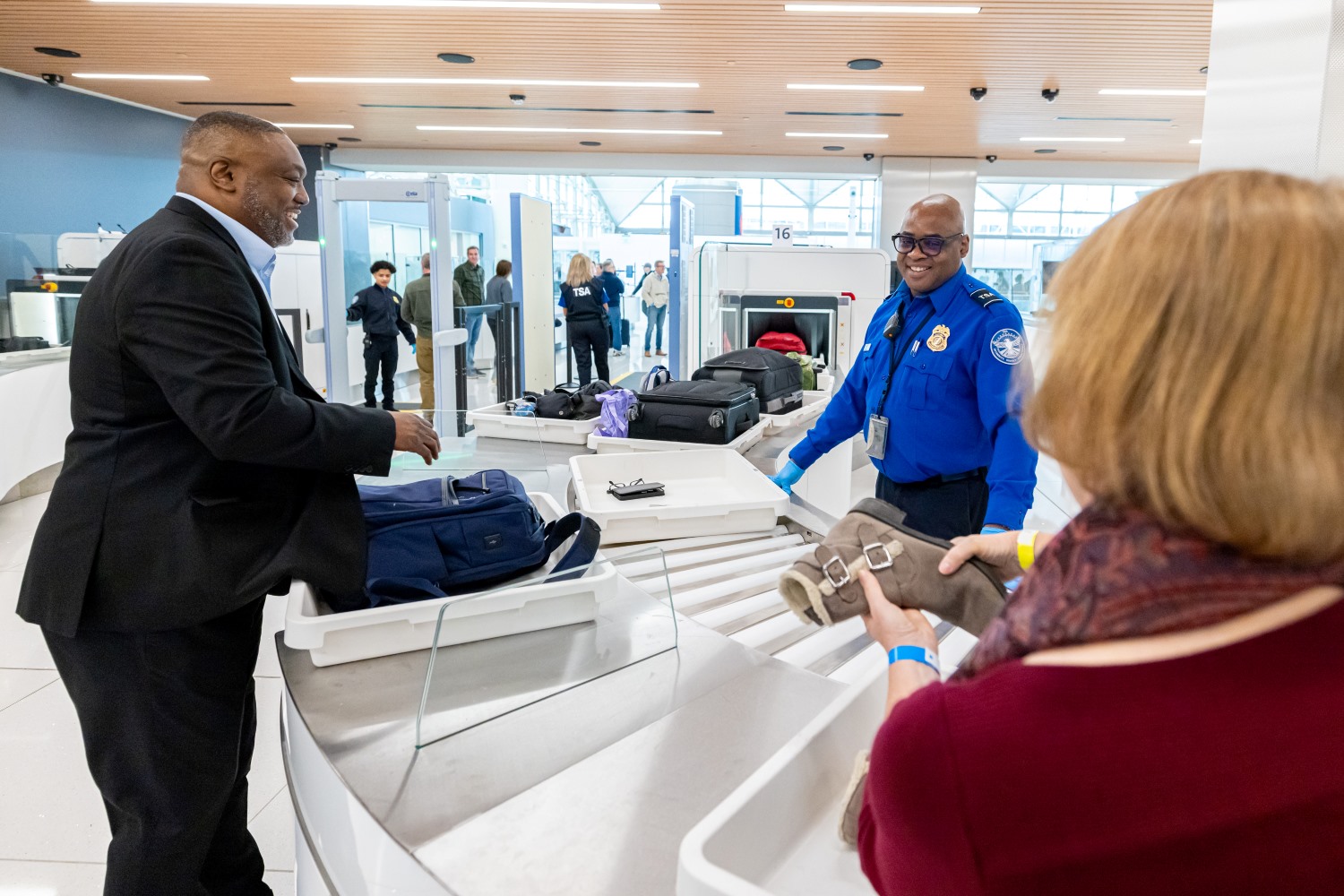
In response, the British and American governments immediately banned passengers from bringing liquids on board aircraft. Realizing the impracticality of a long-term ban, explosives experts determined that 3.4 ounces of liquid (100ml) represented the minimum risk to an aircraft or passengers.
That’s how we got here, that’s how the rules of the rules on “liquids, aerosols, and gels” (or LAGs for short) were adopted.
But there’s a question: “How about the scanners at the security checks?”
As we know, security measures include full-body scanners, metal detectors, and X-ray baggage scanners. These tools can scan into bags to detect suspicious items, including liquids, metal objects, contraband, or unidentified items.
But the problem is a bottle of water, and a bottle of hydrogen peroxide would look almost identical on a regular X-ray image.
That’s why you have to take practically everything out of your carefully packed bag. These procedures scan one person and one bag at a time, causing a backlog and increased waiting times during peak travel hours. However, the script has been flipped.
Smiths Detection And the Quest to Make Flights Safer
Thanks to cutting-edge advancements by Smiths Detection, it’s now commonplace to carry a bottle of water through security, significantly reducing wait times. These innovations come in the form of state-of-the-art airport security scanners. Although they may resemble standard scanners, experienced travelers have learned to opt for lines equipped with these machines, as they outperform the old x-ray scanners by a wide margin.
But before we get to know the company, let’s look at the fundamentals of the old versus the new scanners.
The Difference Between X-ray and CT Scan
X-ray works by sending beams of electromagnetic radiation through an object, and depending on the density and thickness of the material it will absorb different amounts of the radiation. Producing a grayscale image, with the brightness of pixels being determined by the level of absorption of the radiation.
This allows them to identify things like knives or other metallic pointy things with ease. However, these older machines needed things like laptops to be removed, not because it couldn’t identify the laptop, but because the dense materials of the laptop could be used to hide objects below it.
This is where the first upgrade of these new scanners comes in. They are CT scanners, which are essentially 3D versions of x-ray scanners. With the x-ray emitter and detector rotating around the bags on a gantry, it can be able to form 3D images. This helps the security staff to look around your bag without having to pull your laptop out.
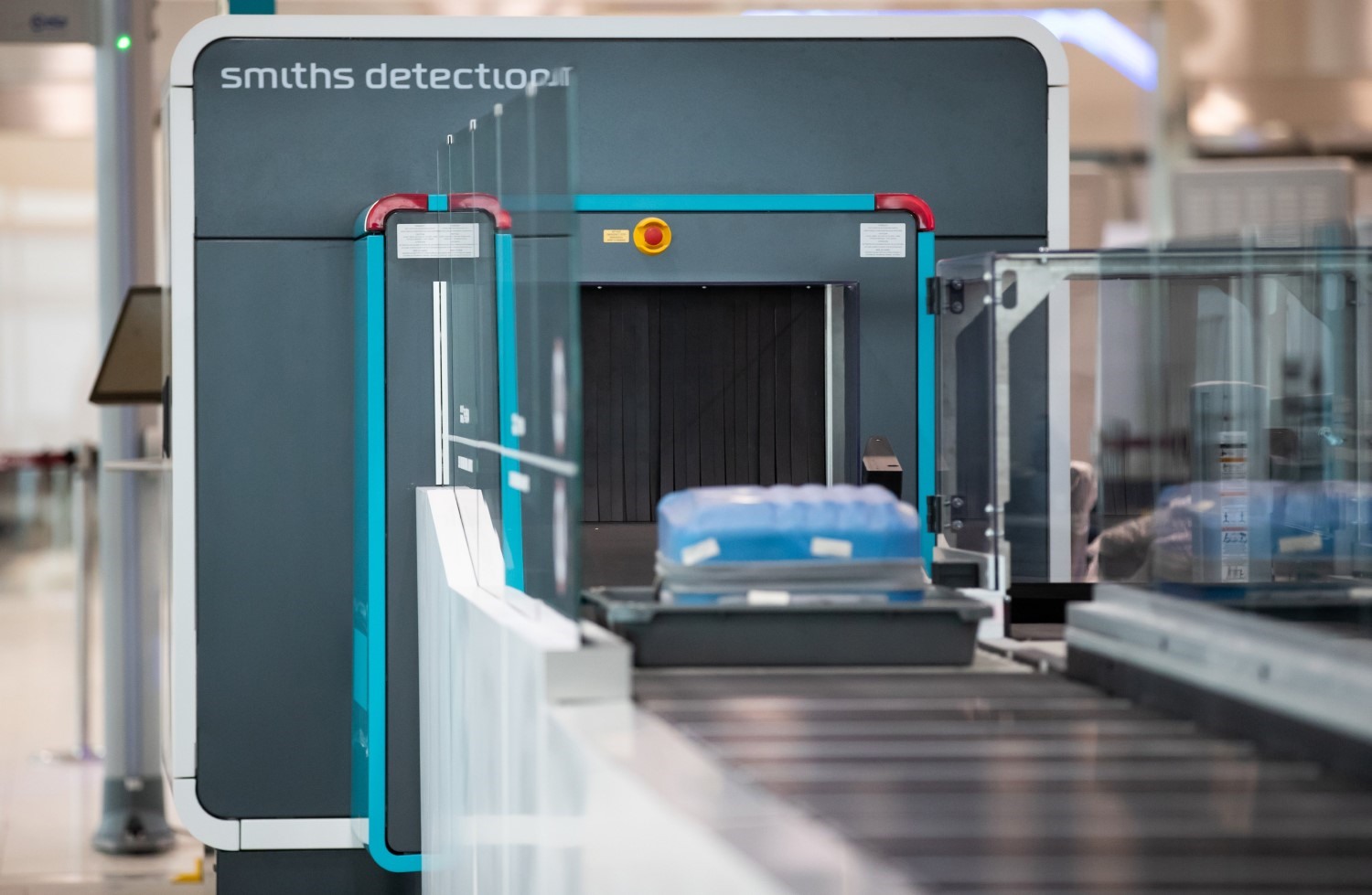
The first key to understanding this technology is to know how x-rays get absorbed. The main way this happens is through something called the photoelectric effect. When x-rays (a type of electromagnetic radiation) hit an atom, some of that energy is absorbed and released as an electron.
Denser materials have more atoms packed together, so there are more chances for x-rays to collide with atoms. The same goes for thicker materials, where x-rays have to travel farther and are more likely to hit atoms.
For example, when you look at an x-ray image of a bone, the center of the femur, which is thick, looks darker. This is because the inner core of bones is less dense than the outer shell, so it absorbs less x-ray radiation. To get an accurate reading, we need to measure the thickness of the material, which the rotating gantry of the scanner can do. This helps us factor thickness into our calculations.
The next factor is the energy of the x-ray beam. Higher energy x-rays are less likely to be absorbed and can penetrate denser materials better than lower energy x-rays. By using two different levels of x-ray intensity, we can learn more about the material’s density.
The most important factor for identifying the exact material is its atomic number. Atoms with higher atomic numbers (more protons in the nucleus) are more likely to absorb x-rays. If we can isolate this variable, we can estimate the material composition. This is what researchers did using a dual energy x-ray scanner. They fired both high and low energy x-rays at materials and recorded the absorption data. Knowing the thickness of the material allows us to correct for that variable.
This process gives us a new variable called mass attenuation. By finding the ratio of mass attenuation between the high and low energy beams, we get a number that correlates to the atomic number of the material. We can then use this information to classify materials.
For example, in their study “Nuclear Instruments and Methods in Physics Research Section A: Accelerators, Spectrometers, Detectors and Associated Equipment,” researchers found that water has an estimated effective atomic number of 7.42. With this data, computer algorithms can automatically flag dangerous materials in bags and alert security agents for further inspection. This is exactly what the dual energy CT scanners from Smiths Detection are designed to do.
How Smiths Detection Took the Concept to the Next Level?
However, there’s a problem. Look at the table of explosive compounds, they all sit at around the same value as water. Water is like 7.42 in their grading, and hydrogen peroxide or other like explosives are like 7.3 7.45, like they are too bunched together.
The error rate is just too high. Water is so close to all of these explosives that it triggers false positives. And false positives really slow things down at airport security and increase staffing costs. It’s just easier to ban water and water based liquids from passing through.

So why are we now suddenly allowed to bring water through. What changed?
As shared by Kevin Riordan, Smiths Detection’s Head of Airports & Checkpoint Solutions, “So that was the start, the atomic numbers, the effective nuclear charge Z eff were collected together grouped together, and if you fell within certain bands you were classed organic and given an orange color, if you were mixed materials and distincts then you were green, if you were highly absorbent, high effective zed, then you were given blue, so that was the start of it”
“The next stage was really, more than having a single view, you could have more than one view of a bag view. You could have a side view, and you could have a top view, or a side view. That starts to give you more data, that is the journey towards the other metric or the other characteristic, which is density. So, when you plot density and Z effective, you can discriminate between materials much better than previously.”
By taking multiple images of the objects inside the bag, the scanner has effectively built a 3D model of the item, and with that it knows the volume of the item. Using this, along with the absorption data, the scanner can estimate the density of the material.
The Early Adopters – Kick off a Trend
For quite some time, this technology has been utilized behind the scenes in airports to scan checked-in bags. The challenge lay in making it compact and dependable for use in practical security lines, where efficiency in moving people through quickly is crucial.
Several European airports have already implemented the new CT scanners, such as Teesside International Airport in County Durham, UK, Schiphol in Amsterdam, and Leonardo da Vinci International Airport in Rome.
However, in Spain, while new airport security regulations took effect on February 1, 2024, many airports have yet to install the updated hand luggage scanners. Implementation is anticipated to occur gradually over the following months and years.
Barcelona’s El Prat airport aims to commence the rollout of the new system in the summer of 2024. Several UK airports, including London Gatwick and Heathrow, have conducted trials of the scanners in recent years.
The UK government has set a deadline of June 2024 to implement the new security technology, although some airports suggest early 2025 is more feasible. Only a few European airports have plans to install 3D scanners.
Meanwhile, some US airports like Atlanta’s Hartsfield-Jackson, Chicago O’Hare, and New York’s LaGuardia have begun using the modern technology. Qatar’s Hamad International Airport in Doha has also enhanced its security measures with the new scanners.
The 100 ml Safety Amount Liquid Rule Ending?
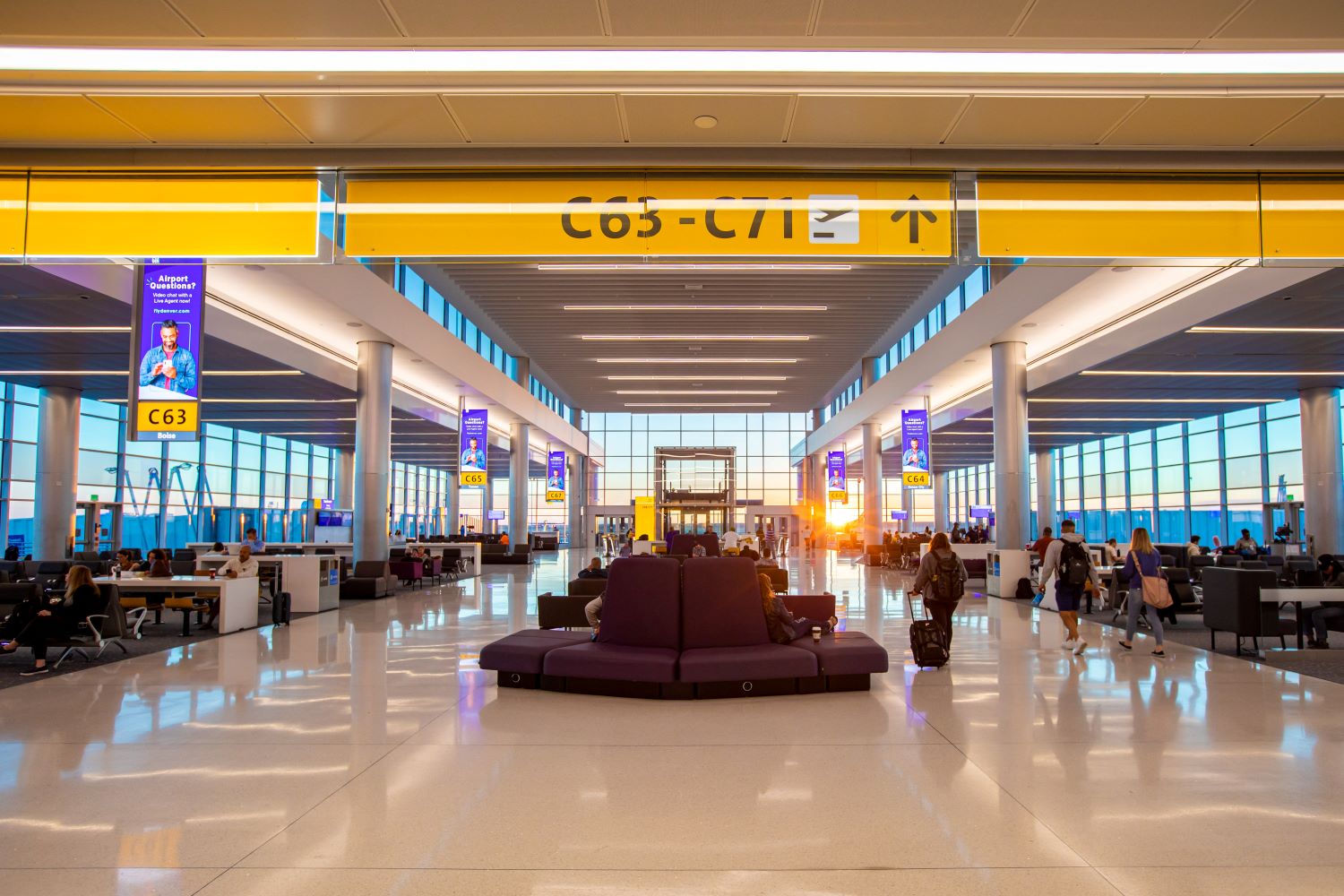
Thanks to these advancements in security scanners, some countries are now poised to eliminate the 100 ml liquid rule after 18 years.
“The newest screening technology that is being deployed can detect explosive compounds in larger quantities,” a US Transportation Security Administration (TSA) spokesperson further explains.
Doing away with the 100 ml liquid rule won’t compromise flight safety; in fact, it’s set to beef up security, according to the UK’s Department for Transport. The new scanners provide more intricate scans of passengers’ belongings, aiding in the detection of potential threats and banned items more effectively. This advancement promises to streamline the airport process, slashing security wait times and enhancing convenience for travelers.
In addition, it contributes to a reduction in plastic waste as passengers can opt for larger, reusable containers instead of multiple disposable ones. What’s more, it may lead to cost savings for passengers who can bring their own beverages, sidestepping pricey airport purchases.
Once the devices are installed, the 100 mL limitation will be phased away over the next two years. Until then, passengers may not see the time-saving benefits of the recent technology. However, Sens-Tech believes that the simpler approach will allow airports to process 30% more people each hour.
In the future, UK passengers will be able to take up to two liters of liquids in their hand luggage, with no restrictions on the container size. They will not be forced to put liquids in a plastic bag or separate them from their bags when going through security.
However, the TSA claims it will take many years to implement the technology across the entire system in the United States, thus the 100 ml regulation (known as 3-1-1) will stay in place to protect transportation security.

